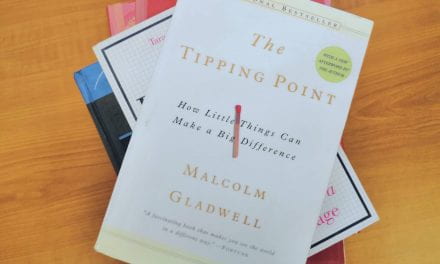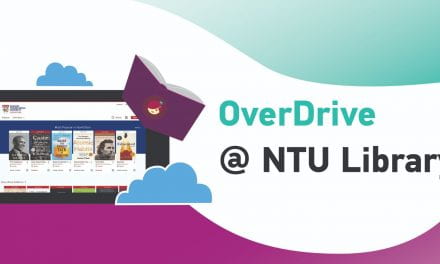Thinking, Fast and Slow by Daniel Kahneman, a winner of Nobel Prize in Economics in 2002, will always have its own special place in my heart (more specifically, in my Kindle). Kahneman proposes in this book that humans are essentially illogical creatures, prone to fallacy while also still predictable at times. Many might not consider this book as leisure reading material, but Kahneman managed to make it very easy to read and understand, even if you have no prior knowledge of psychology (or economics).
The book consists of 38 chapters grouped into five parts. In the next section, I will briefly summarize the content of each part. So grab your favorite snack and get comfy! (Otherwise, scroll to find the TL;DR version at the end of this post)
Part I. Two systems
We start with Kahneman introducing the two systems in the mind as the “characters” of the book: system 1 and system 2. System 1 is the fast one, it operates automatically and quickly with little to no effort and control. System 2 is the slow one; it is the conscious, the one that makes choices, and does the effortful mental activities. Kahneman uses these two terms throughout the rest of the book. Broadly speaking, this part elaborates on how our mind forms judgment and thinking.
Kahneman proposes that our body considers thinking as an expensive process and therefore we are programmed to avoid thinking unless necessary. He expanded this notion by introducing the concept of cognitive ease and cognitive strain; which basically is a sort of a scale of how hard you have to think and how much energy you have to consume to do so. This, together with the notion that “thinking is expensive and the associative machine”, leads the mind to often choose to answer the easier related question instead of the actual question, whether you realize it or not.
Part II. Heuristics and biases
In this part, Kahneman sort of expects readers to have basic knowledge of statistics (or at the very least, know what is “mean” and the concept of “sampling”). First, he begins by introducing how in statistics, the larger the sample size, the more generalizable the result, and vice versa. Following that, he continued to explain about how cognitive ease plays a part in persuading people to believe the statistic i.e. if you can easily recall an example when somebody was mugged, you will be more likely to believe that the crime rate is high. Although if the statistics do not match the stereotype that you believe in, then you are less likely to believe in the statistics and more likely to believe in the stereotype instead. He then briefly touched on Bayesian analysis which, I admit, I still have not fully grasped its formula yet.
Kahneman then moved on to the concept of regressing to the mean. The key message here is basically to not mistake luck for talent. When you observe that someone is doing exceptionally well or exceptionally badly, do remember that you are possibly witnessing them at their “exceptional” condition and not at their average. He closed the chapter by reminding us that a probability of an event occurring depends on the probability of previous events occurring (cumulative probability). The probability of me being able to graduate from university depends on the probability of me being able to graduate from primary school, not being involved in debilitating accidents, passing entrance exams, etc.
Part III. Overconfidence
This part is, in my opinion, the most interesting part of this book. Kahneman begins this section by introducing “What You See is All There is” or WYSIATI, a concept whereby we make our judgments based on what we know. Kahneman then introduced the concept of validity (a term that all social scientists are familiar with) that’s basically prompting us to ask “are we measuring with the right instrument?”, and in a way makes us aware of our tendency to overestimate our ability to predict an outcome based on measurements that may or may not be valid. Another interesting example that he gave in this part is related to the “illusion of skill”. He noted that in his research, there is seemingly no correlation between the financial skill of an investment adviser with the success of the investment, which in my opinion is something that’s quite eye-opening. Turns out it seems that investments largely depend on your luck!
He then moved on to another interesting question: which one is more reliable, intuition or formula? Kahneman gave an anecdote on how formula beats intuition in predicting college success (in this example, intuition refers to the intuition of interviewers). In this case, can we trust expert intuition? In summary, the short answer is that “it depends”. If the experts have access to: 1. Environment that’s sufficiently regular to be predictable and 2. Opportunity to learn these regularities through prolonged practice, then it is more likely that we can trust the experts. Examples he gives of such experts are firefighters and athletes.
Next, Kahneman introduced the concept of “outside view”. In summary, he highlighted that “insiders” in a project or organization tend to be blind to things that are perhaps clear as day to “outsiders”, and as such are prone to “planning fallacy” where the insiders tend to overestimate their ability to overcome obstacles and neglect to look at competitors. Truly, this section is tremendously fun to read and the knowledge inside is useful to always keep in mind.
Part IV. Choices
Kahneman writes on various theories about how people make their decisions. In a sense, this chapter might be most interesting to the economists. This is where Kahneman talked about prospect theory that challenged the long-standing expected utility theory; this particular work gave him the Nobel Prize in Economics. Other theories or concepts mentioned in this chapter includes endowment effect (putting more value into things just because we own it), Fourfold pattern, risk policies, keeping score, and framing a statistic and reality (e.g. 90% survival rate sounds much better as opposed to 10% mortality rate). Filled with examples, the chapters in this part are still pretty easy to read even for someone with little to no background in economics.
Part V. Two selves
In this part, Kahneman proposes something that stunned me when I read it: we might be remembering things differently from our actual experience. He referred to this as two selves: experiencing self and remembering self who, as odd as it seems, at times “feels like strangers to each other”. He also noted that we tend to give the bad memories more weight than the good ones. He then moved on to my most favorite sub-discipline in psychology: well-being (although in this part, he uses the term as experienced well-being). The part ended with a brief chapter on thinking of life, and finally, he ended the book with a conclusion.
TL;DR version: I would highly recommend this book to everyone! It’s a very interesting read and full of wisdom about the wonderful complexities of the human mind.
Some of my favorite quotes:
“Intelligence is not only ability to reason; it is also the ability to find relevant material in memory and to deploy attention when needed.” (pg 46)
“… the idea of money primes individualism: a reluctance to be involved with others, to depend on others, or to accept demands from others.” (pg 55)
“If you care about being thought credible and intelligent, do not use complex language where simpler language will do.” (pg 63)
“The sequence in which we observe characteristics of a person is often determined by chance. Sequence matters, however, because the halo effect increases the weight of first impressions, sometimes to the point that subsequent information is mostly wasted.” (pg 83)
“Paradoxically, it is easier to construct a coherent story when you know little, when there are fewer pieces to fit into the puzzle. Our comforting conviction that the world makes sense rests on a secure foundation: our almost unlimited ability to ignore our ignorance.” (pg 201)
“Experts are led astray not by what they believe, but by how they think, says Tetlock.” (pg 219)
Other useful information:
Time to read:
2 weeks, with around ~3 hours of reading each day (taking into account the time you may need to pause and digest the information)
Optimum environment to read:
Cozy, but not too cozy. A beanbag is an excellent choice, along with a cup of warm tea (I’d personally suggest peppermint tea)
Background music to play:
Something with mellow beats that helps you concentrate e.g. Chillhop, Jazztronica






